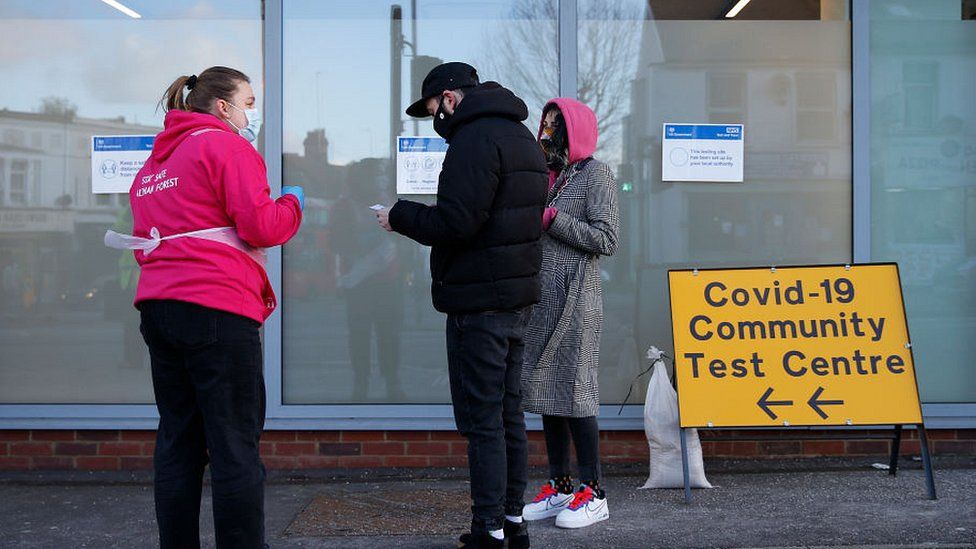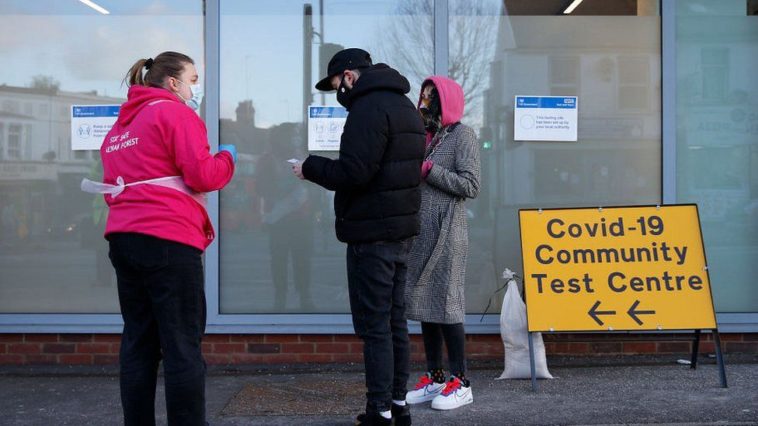Covid infections remain high but stable

The number of Covid infections remained virtually unchanged in the week to 23 January, Office for National Statistics figures suggest.
Its survey suggests the epidemic is levelling off or perhaps very slightly falling – but not at the rate hoped.
The R number for the UK is estimated to be between 0.7 and 1.1. A figure below one means the epidemic is shrinking.
Infections remain high in England, with London continuing to have the worst epidemic, the ONS said.
But the virus appears to be levelling off throughout the rest of the UK.
The ONS tests a random sample of people in private residences across the UK for Covid weekly, whether they have symptoms or not.
This means the survey is among the best sources for understanding what’s really happening to the virus.
According to ONS estimates, one in 55 people in England were estimated to have the virus, one in 70 in Wales, one in 110 in Scotland and one in 50 in Northern Ireland.
In England and Wales, this proportion is unchanged compared with the week before.
Scotland has seen a small fall, and Northern Ireland a small rise in their infection rates.
Infections are lower than levels seen in early January but now appear to be flattening at what is still a high level.
- Study suggests slight fall in England infections
- What is the UK’s R number and why does it matter?
- How many people have been vaccinated so far?
This pattern is in contrast with the confirmed cases published on the government’s dashboard, which show a dramatic spike followed by a very steep fall after the beginning of the year.
These figures may be skewed by people coming forward for testing in large numbers around the Christmas period, with numbers of tests conducted falling after the first week of January.
The ONS’s data published on Friday broadly echoes the findings from other surveillance studies, which are not influenced by who comes forward for testing in the same way.
The latest figures from Imperial College London’s React study – one data source used by the government to judge the progress of the epidemic – suggested infections were moving in the right direction but “not fast enough” and “by no means as fast as in lockdown one”.
This could be for reasons including a new, more transmissible variants of the virus, the looser lockdown restrictions or the time of year.
The ZOE app’s symptom study had suggested a larger fall in previous weeks but its data suggested this decline was slowing and infections remained high.
Government data shows the number of new patients admitted to hospital with coronavirus is gradually falling, but the total number of Covid patients remains high and has not yet really begun to come down.
Even after infections and, a little later, hospitalisations fall, Covid patients can remain sick for some time and so the pressure on the NHS isn’t beginning to ease just yet.
Published at Fri, 29 Jan 2021 13:45:23 +0000





Comments
Loading…